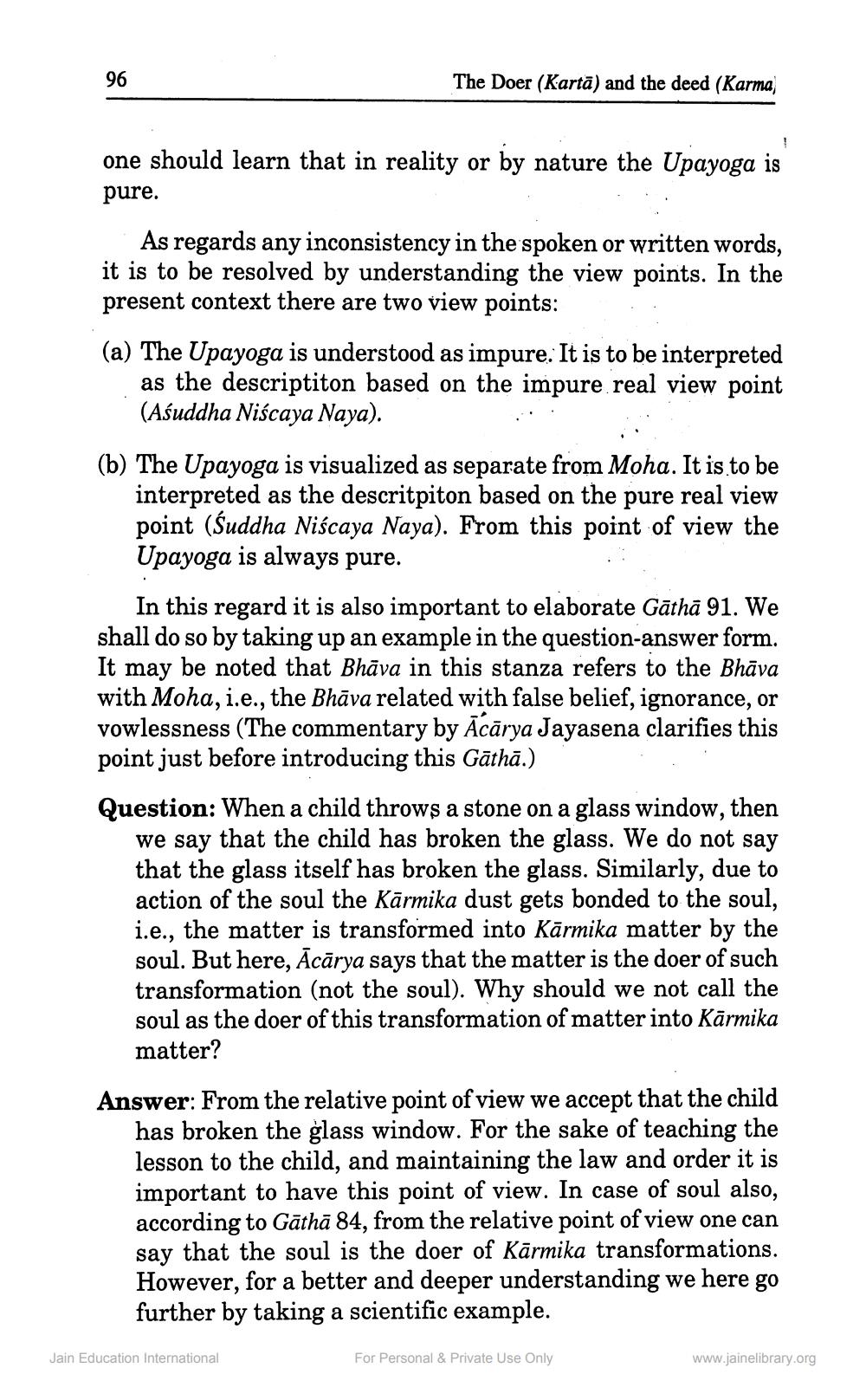________________
96
The Doer (Kartā) and the deed (Karma)
one should learn that in reality or by nature the Upayoga is pure.
As regards any inconsistency in the spoken or written words, it is to be resolved by understanding the view points. In the present context there are two view points:
(a) The Upayoga is understood as impure. It is to be interpreted
as the descriptiton based on the impure real view point (Aśuddha Niścaya Naya).
(b) The Upayoga is visualized as separate from Moha. It is to be
interpreted as the descritpiton based on the pure real view point (Áuddha Niścaya Naya). From this point of view the Upayoga is always pure.
In this regard it is also important to elaborate Gātha 91. We shall do so by taking up an example in the question-answer form. It may be noted that Bhāva in this stanza refers to the Bhāva with Moha, i.e., the Bhāva related with false belief, ignorance, or vowlessness (The commentary by Ācārya Jayasena clarifies this point just before introducing this Gāthā.) Question: When a child throws a stone on a glass window, then
we say that the child has broken the glass. We do not say that the glass itself has broken the glass. Similarly, due to action of the soul the Kārmika dust gets bonded to the soul, i.e., the matter is transformed into Kārmika matter by the soul. But here, Ācārya says that the matter is the doer of such transformation (not the soul). Why should we not call the soul as the doer of this transformation of matter into Kārmika matter?
Answer: From the relative point of view we accept that the child
has broken the glass window. For the sake of teaching the lesson to the child, and maintaining the law and order it is important to have this point of view. In case of soul also, according to Gāthā 84, from the relative point of view one can say that the soul is the doer of Kārmika transformations. However, for a better and deeper understanding we here go further by taking a scientific example.
Jain Education International
For Personal & Private Use Only
www.jainelibrary.org




